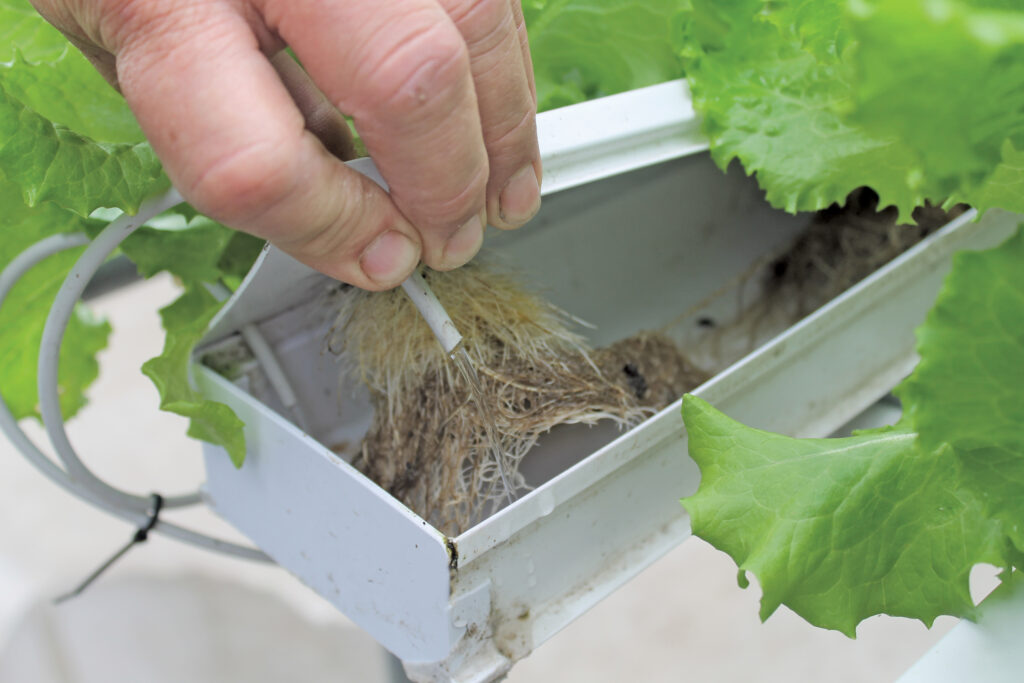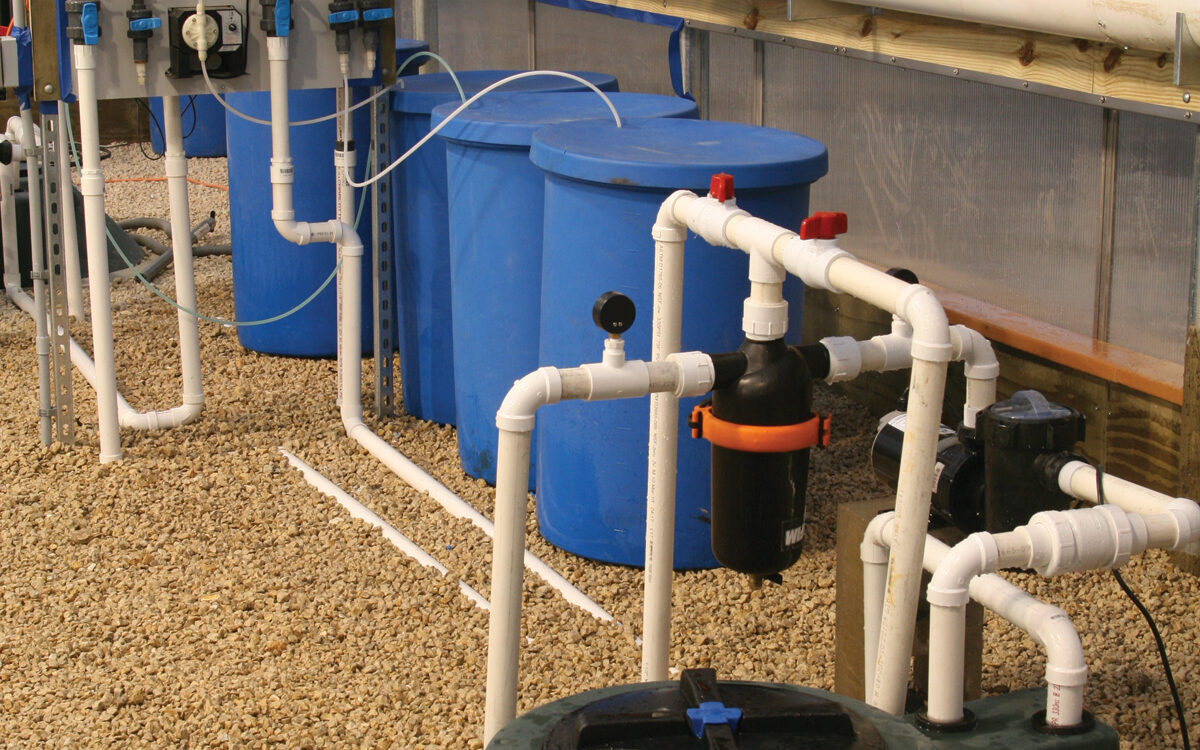How to Minimize Water Borne Diseases in Hydroponics
Hydroponics can be an effective growing method for operations on any scale, helping them boost crop quality, while also conserving resources. When used in a greenhouse, these systems eliminate a bulk of the problems that traditional field growers face, like facing unpredictable weather or raising crops in inadequate soil conditions.
It’s no secret that hydroponic systems offer growers a variety of benefits, but there are still obstacles they’ll need to navigate to ensure plants reach their full potential. The biggest threat to hydroponic crops is the potential for water borne diseases.
In many cases, these can be difficult to get under control, so operations need to care for their hydroponic system year-round in order to avoid any damage to harvests. Without a strategy in place for disease prevention, harmful pathogens can run rampant in a growing facility and disrupt production cycles.
To keep their operation running efficiently, every grower should have an understanding of the most common types of water borne diseases in hydroponics, as well as how to deal with them appropriately. Using this guide, operations can learn more about the pathogens they need to look out for, along with some of the preventative methods growers have found success with for keeping their crops healthy.
The Most Common Water Borne Diseases In Hydroponics
Every operation is going to worry about pests and diseases impacting their crops, but with hydroponic gardening in particular, growers need to pay careful attention to pathogens that spread through water. The two most common organisms that cause hydroponics diseases are Pythium and Phytophthora. If operations are unable to catch these early, they can lead to stunted growth, or even plant death, for all the crops in a single system.
Pythium
Pythium is known as an oomycete, which is a microorganism that physically resembles fungi, and can be fast-spreading and difficult to control. These are often referred to as water molds and are notorious for thriving in wet environments, like irrigation water within a hydroponic system.
This pathogen causes root rot, one of the most common conditions in hydroponics. When afflicted by root rot, plants’ root systems are rendered useless, and their leaves ultimately wilt and turn yellow. As opposed to other similar pathogens, like Phytophthora, Pythium is not species-specific and can impact any kind of hydroponic crop.

The easiest way to identify Pythium is by monitoring the root systems of plants. Rather than having a firm, white appearance, Pythium-infected roots will turn brown or black and feel slimy or mushy. They can also be characterized by an unpleasant smell.
Phytophthora
Phytophthora is similar to Pythium in many ways, but it comes in two major varieties that are known to attack floriculture crops and cause root, crown and foliar blight. Both types of this pathogen can decimate crops very easily, without the right protection in place.
This oomycete thrives in warm, humid environments and spreads rapidly by producing zoospores, which are microscopic spores that use small, thread-like appendages (flagellum) to swim through water. Some of the most common crops that can be infected by Phytophthora are squash, cucumbers, soybeans, onions and even houseplants.
Like Pythium, growers can best spot this disease by checking their plant’s root systems for a change in color or texture, as well as a strong, unpleasant smell. Disease caused by Phytophthora will eventually spread up the plant, so if operations discover black, soft and slimy roots, it’s only a matter of time before they see leaves turning yellow and wilting.
Sign Up Now For More Information
Effective Methods For PReventing Hydroponics Diseases
Once aware of the most common hydroponics diseases they might encounter, operations can learn some effective ways to thwart them. Three cornerstones of a healthy hydroponic setup are a clean and reliable water supply, a high-quality filtration system and routine sanitation.
Testing And Caring For Your Water Supply
The first key to sustaining healthy plant growth is providing them with a clean, well-nourished water supply. Operations can get a report from their local water and sewer commission to get a general idea of water quality, and then gather additional details using a dedicated testing kit.
With their own kit, growers can get more comprehensive results and identify the presence of any pathogens, while also gaining information about pH levels and nutrient concentration. These two factors are crucial, as an imbalance of nutrients or an unsuitable pH range can act as an accelerator for water borne diseases in hydroponics.
To ensure nutrients and pH levels are dialed in at all times, growers should take advantage of fertigation. Fertigation will allow them to establish and maintain their ideal growing conditions, promoting healthier crop development and limiting the potential for any hydroponics diseases.
Filtration
To care for their water supply, growers should also utilize a form of filtration, so they can remove any pathogens from irrigation water before it reaches their crops. While every operation will benefit from employing a filtration system, they are especially crucial for growers who use surface water, as opposed to well water.
Some water filtration systems come with screen or paper filters to filter out large-sized particles and debris, but often times, more is needed to combat water borne diseases in hydroponics effectively. For this reason, it is recommended that growers incorporate a number of additional filtration systems.
GrowSpan carries a wide range of different filters, ensuring growers can keep their irrigation water clean, no matter what type of hydroponic system they use. One option is Granular Activated Carbon Filter Cartridges, which are great for reducing organic material, color, unwanted tastes and odors, including chlorine.

Dual lite Manual Netafim Disc Filters require practically no maintenance. The multiple-disc ring is manufactured from durable polypropylene components for increased chemical resistance and is designed to capture more debris than traditional screen filters.
HydroLogic Purification Systems ensure top-quality water for any hydroponic, aquaponic or aeroponic operation. The HydroLogic Evolution RO1000 is capable of producing 42 gallons of pure water each hour and removes at least 94 percent of all parts per million.
Cleaning & Sanitation
To complement their clean water supply, growers should also get in the habit of disinfecting their equipment and greenhouse surfaces. By using disinfectant products to clean between successive plantings, they can begin each growing cycle with a fresh start and peace of mind, knowing their production space is inhospitable for harmful pathogens.
As a preventative treatment, growers can also try using bio fungicides in their system. This biological treatment is applied to growing media or nutrient solution and employs beneficial microbes that occur naturally in soil, so it is safe to use in organic production. Additionally, pathogens are less likely to develop resistance to bio fungicides, which can be a frequent issue with traditional synthetic fungicides.
The best course of action is for growers to compile all necessary tasks into a list and establish a regular cleaning schedule. With a combination of routine sanitation and the use of plant-friendly bio fungicides, operations should be able to maintain a healthy environment and keep their hydroponic systems running smoothly.
GETTING RID OF WATER BORNE DISEASES IN HYDROPONICS SYSTEMS
Should these tactics fail, thorough cleaning and sanitation can also be an effective way for growers to rid their system of any plant diseases that have turned up. By purging their hydroponic system, operations can ensure their growing area, as well as the rest of their facility, is fully cleaned and prepared for the next growing cycle. The series of videos below provides growers with a detailed breakdown of how they can perform a deep clean on their hydroponic system.
To learn more about preventing and controlling water borne diseases in hydroponics, call or Request a Quote today.
This post was originally published in June, 2017 and has been updated for freshness, accuracy and comprehensiveness.
Related Articles
Growing Smarter: An Overview Of A Hydroponic Greenhouse
For growers looking to implement a hydroponic greenhouse in their operation, they’ll first need to gather information and explore all their options.
Integrated Pest Management And How Our Farms Benefit From Its Application?
Integrated pest management is a very intuitive and biological solution to crop loss and pesticide withdrawal legislation.
The Complete Guide To Hydroponic Growing Systems: Choosing The Right Hydroponic Garden System
Using this detailed breakdown, growers can get the information they need to choose their ideal hydroponic garden system and implement it into their operation.
Four Tips For Thriving In Hydroponics
Apply the following four guidelines in order to ensure the utmost efficiency and quality when running a hydroponic system.

